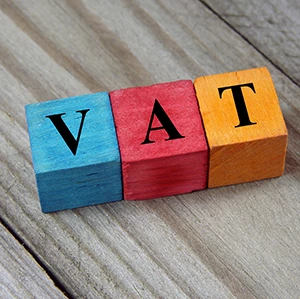At first glance, the UK VAT system is complicated and it can be difficult for contractors to determine the best route for them. Do you have to register?
Should you register for VAT?
You must register for VAT if your taxable turnover is more than £85,000 (2018/19). If your turnover is less than the threshold you might still want to register, depending on your circumstances. There are two main considerations:
The VAT profile of your clients. If most of your clients are VAT registered, they’ll be able to claim back any VAT they pay, so charging VAT on your invoices won’t increase the cost of your services.
Will it be worth your while? If you’re going to volunteer for additional work like completing a VAT return, you’ll want to get something out of it. This would mean either spending enough on VAT-able goods and services to make it worth claiming your VAT back, or being able to make a profit from using the flat rate scheme (see below).
How the standard VAT Scheme works
Once registered for VAT, you will be required to charge VAT on all invoices generated by your company, including those for your services and for any expenses you recharge to your client. Assuming your client is VAT registered, this won’t increase their costs as they will be able to claim back the VAT.
You will be able to reclaim VAT paid on any goods and services purchased through your company.
You will have to complete a VAT return and pay HMRC on a quarterly basis.
How the Flat Rate VAT Scheme Works
Using the flat rate scheme, you’ll still charge 20% VAT on all your invoices, but instead of reclaiming VAT on purchases, you pay HMRC at a lower rate.
The rate you pay is decided by the industry you work in. For example, at the time of writing the flat rate for “computer and IT consultancy” is 14.5%, so an IT consultant could charge VAT at the standard rate of 20% and pay 14.5% to HMRC, meaning the difference is additional profit for their company.
Joining and leaving
You can join the flat rate VAT scheme if your taxable turnover is £150,000 or less and you’ll have to leave the scheme if your turnover exceeds £230,000. If your turnover exceeds this limit but you believe it to be a temporary “blip” you can appeal to HMRC to stay in the scheme.
Limited cost businesses
If your costs for goods are less than either £1,000 or 2% of your turnover, you count as a limited cost business, which means the flat rate for VAT will be 16.5%, regardless of the industry you work in.
The definition of “goods” does not include:
Any services
Expenses like travel and accommodation
Food and drink eaten by you or your staff
Vehicle costs including fuel, unless you’re in the transport business using your own vehicle
Rent, internet, phone bills or accountancy fees
Gifts, promotional items and donations
Goods you will resell or hire out, unless this is your main business activity
Training and memberships
Capital items like office equipment, laptops, phones and tablets
Most contractors will be limited cost businesses, and will therefore have to pay this higher flat rate.
Which VAT scheme should you choose?
The choice of whether to use the flat rate scheme or the standard scheme usually comes down to how much your company spends on VAT-able goods and services. Will the VAT you could claim back be more or less than the difference between your flat rate and the standard VAT rate? A good contractor accountant will be able to advise you based on your particular business and circumstances
Example:
|
